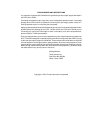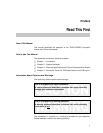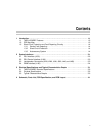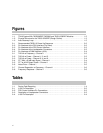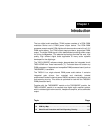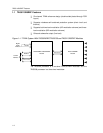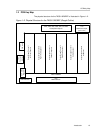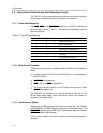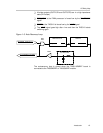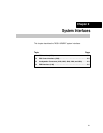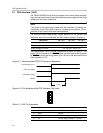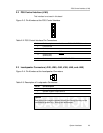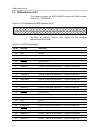
PCB Key Map
1-4
1.3 Short-Circuit Protection and Fault Reporting Circuitry
The TAS5110 is a self-protecting device that provides device fault reporting
(including over-temperature protect and short-circuit protection).
1.3.1 Device Fault Reporting
The ERR0, ERR1, and SHUTDOWN outputs from TAS5110 indicates the
device conditions shown in Table 1–1. The device fault reporting outputs are
open-drain outputs.
Table 1–1.Device Fault Reporting
SHUTDOWN ERR0 ERR1 DEVICE CONDITION
0 0 0 Illegal PWM input state
0 0 1 Short-circuit protect
0 1 0 Over temperature protect
0 1 1 Low regulator voltage protect
1 0 0 Reserved
1 0 1 Reserved
1 1 0 High temperature warning
1 1 1 Normal operation
1.3.2 Short-Circuit Protection
The short-circuit protect error condition latches the TAS5110 in the shutdown
mode:
- H-bridge outputs (OUTPUTA and OUTPUTB) are in a high-impedance
state (Hi-Z state).
- SHUTDOWN is asserted low.
- ERR0 is high and ERR1 is asserted low.
- The H-bridge outputs remains in a Hi-Z state until the device is reset
(RESET
pin asserted low).
The TAS5110 is not designed for driving load impedance less than 4 Ω (at
20-Vdc output stage supply), where the internal current limit protection is
activated at high power levels.
1.3.3 Auto Recovery System
Together with a PWM processor from Texas Instruments (e.g., the TAS5026
or the TAS5036), the TAS5110 can be configured in autorecovery mode. The
SHUTDOWN
signal from the TAS5110 is in autorecovery mode connected to
ERR_RCVY
at the PWM processor.
The short-circuit protect error condition results in the following autorecovery
sequence:



